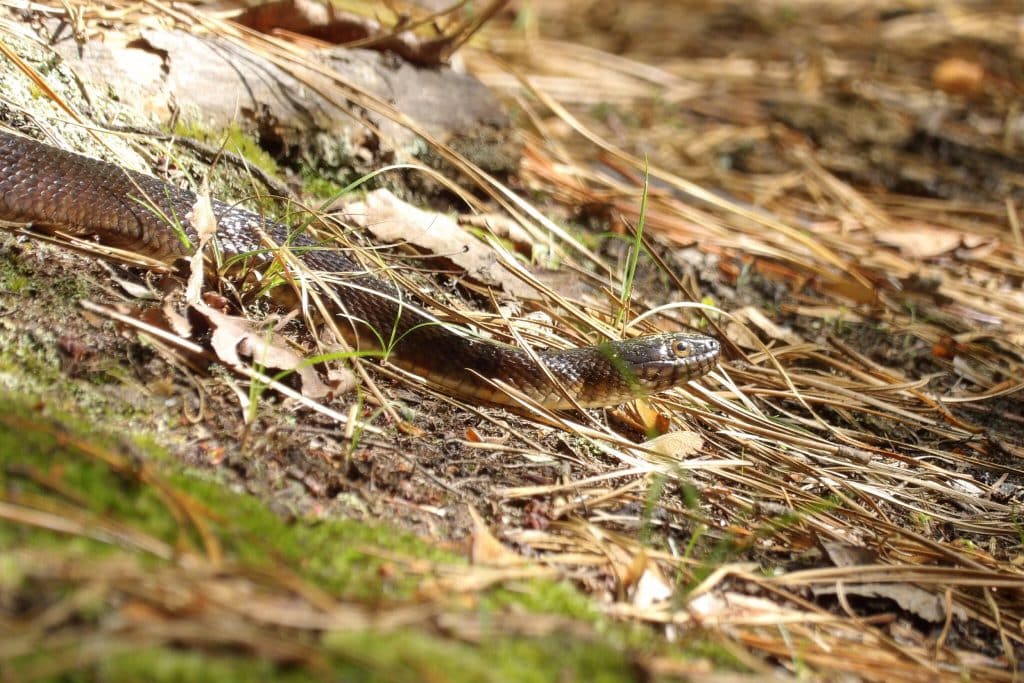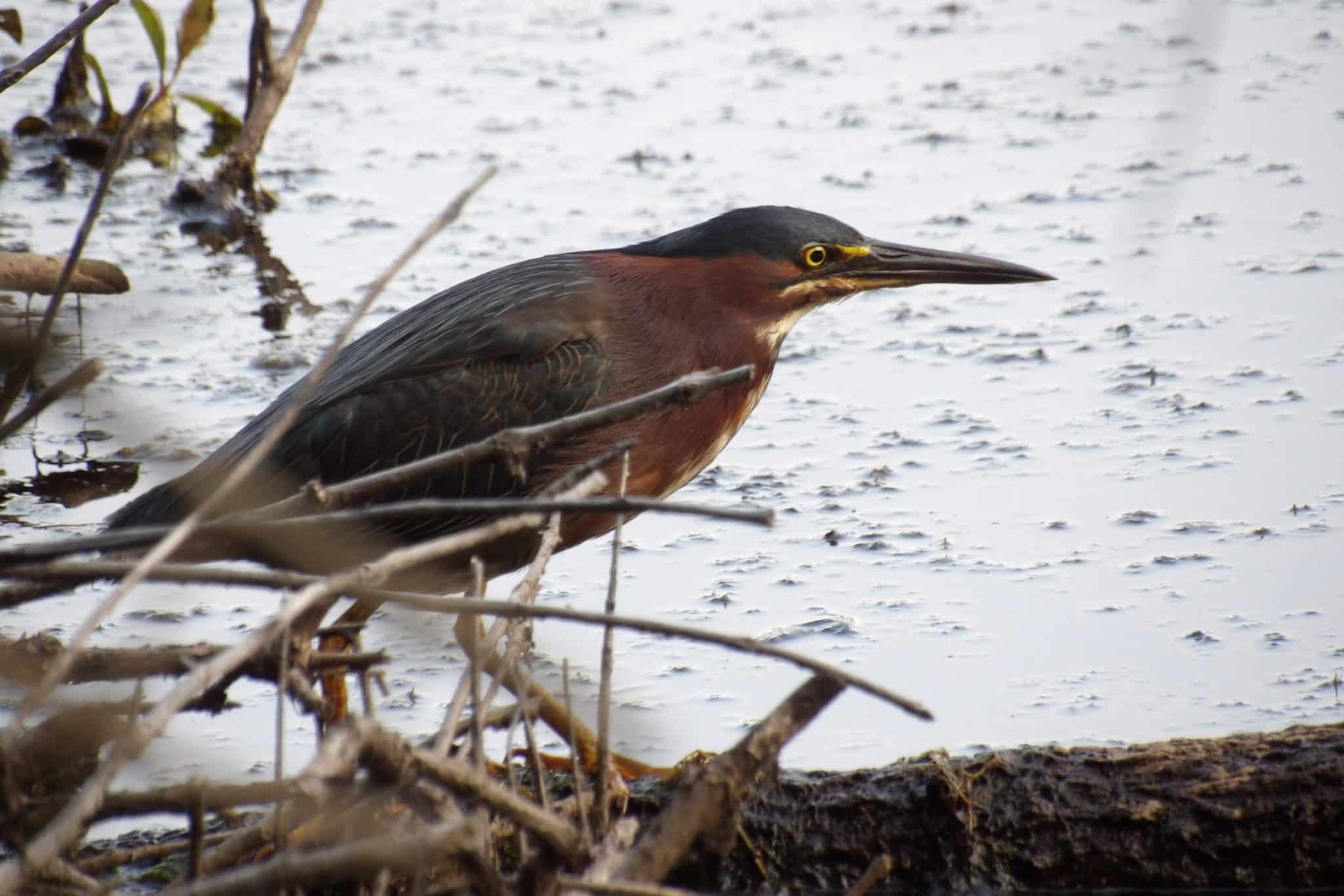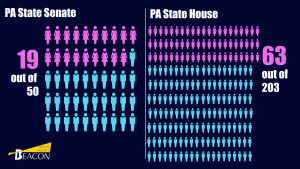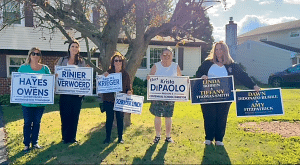This article originally appeared on Inside Climate News, a nonprofit, non-partisan news organization that covers climate, energy and the environment. Sign up for their newsletter here.
When Zoe Welsch learned that her favorite nature spot, Black Run Reserve, could soon be neighbors with a cul de sac in a subdivision, she was devastated.
“This is so upsetting for so many reasons. I’ve been going here for so many years and if you know me personally, you know this spot,” said Welsch, a South Jersey fashion and lifestyle influencer on TikTok.
Located in Evesham Township, New Jersey, this 1,300-acre forest is not only a gateway to the Pine Barrens and home to more than a hundred species, but it is also the source of drinking water for millions of New Jersey residents. Now, Devel LLC is looking to turn more than 780 acres of forest next to the reserve into a development with 270 single-family homes.
In response, Climate Revolution Action Network and the Pinelands Preservation Alliance are mobilizing young people all over the nation, particularly those in their teens to late 20s, to advocate for the land to be protected through changes to the state Pinelands Commission’s comprehensive management plan.
The commission has proposed redesignating the 780 acres from “rural development” to “forest area,” prohibiting homebuilding. Publication of that proposal in the New Jersey Register triggered a 60-day comment period that runs until mid-August. But the earliest the Pinelands Commission could approve the change is mid-October, when its final vote is scheduled.
“Unless we can move on sustaining and preventing development of open space, we are putting millions of people at risk from accessing clean drinking water.” – Jason Howell, an advocate from the Pinelands Preservation Alliance
Before that happens, Devel could receive a “certificate of filing” from the Pinelands Commission, which has been conducting an environmental review of the project since the developer filed its application in November 2024. With that certificate, Devel could then seek project approval from Evesham Township, before the Pinelands Commission’s October vote.
”We’re in a race to put enough political pressure on the Pinelands Commission and the Evesham Township government to finalize these protection amendments before the development comes in,” said Jason Howell, an advocate from the Pinelands Preservation Alliance.
A representative of Devel did not respond to a request for comment.
The Pine Barrens ecosystem is a large and unique natural region, covering more than 20 percent of New Jersey’s landmass, Howell said. Since the 1960s, residents of the area recognized its ecological importance. And since its founding in 1989, he said, the Pinelands Preservation Alliance has worked to safeguard its habitats, water resources and cultural heritage—which includes a cemetery for those who escaped slavery— from encroaching development and other threats.
Among the species there are the endangered Pine Barrens treefrog (Hyla andersonii), according to the New Jersey Department of Environmental Protection. With its vibrant green body and deep red eyes, this frog is found almost exclusively in the acidic wetlands of the Pine Barrens and relies on the undisturbed forest habitats to breed and survive.

The northern pine snake, a state-threatened species, also calls this reserve home. These large, non-venomous snakes nest in sandy soils and help control rodent populations, but habitat fragmentation makes their survival increasingly difficult.
Swamp pink (Helonias bullata), a federally threatened plant, and bog asphodel (Narthecium americanum), native to the Pine Barrens, both rely on the reserve’s clean groundwater and undisturbed wetlands to grow, according to the Center for Plant Conservation.
The Pinelands Preservation Alliance is among those worried about the impact to these and other plant and animal species if 270 homes are built beside the reserve.
The preserved area and surrounding land is also tied to regional environmental stability. The forest sits atop the Kirkwood-Cohansey aquifer, a shallow, sandy groundwater system. The aquifer was formed thousands of years ago during the retreat of the Atlantic Ocean, which left behind layers of sand and gravel that now stores 17 trillion gallons of water.
It stretches beneath much of South Jersey and has been supplying homes, farms and other ecosystems across the region with fresh water. The surrounding wetlands have also played a huge role in absorbing stormwater, preventing flooding and recharging the aquifer.
READ: Native American Teens Kayak Major US River to Celebrate Removal of Dams and Return of Salmon
But the aquifer is already under pressure, with local wells drying up in some areas due to overdrawn water tables. Because it lies close to the surface, the housing development’s opponents worry it has a strong possibility of contaminating the water.
“Unless we can move on sustaining and preventing development of open space, we are putting millions of people at risk from accessing clean drinking water,” said Howell.
More development would also exacerbate risks associated with climate change. Paving over land that naturally absorbs runoff removes a critical defense against flooding, an increasing problem as storms dump more rain.
“This fight to save this area is for the New Jersey residents of the present and future generations. It’s about protecting the right to clean water, safe homes and a liveable future.” – Ben Dziobek, Executive Director of the Climate Revolution Action Network.
While the 270 homes adjacent to the Black Run Reserve haven’t been approved yet, local advocates say the development is already close to becoming reality. Under New Jersey’s “time of application” rule, environmental regulations must be in place before a development application is submitted, or they won’t apply to the project at all. That means the clock is ticking, with approval of Devel’s plan possible if the developer were to get approvals from both the Pinelands Commission and Evesham Township before the commission’s final vote on its proposed redesignation in its comprehensive management plan.
“This plan will save this piece of land,” Ben Dziobek, executive director of the Climate Revolution Action Network. “Right now, it’s slated for so many single-family homes. You can only imagine how much that costs, and Gen Z can’t afford to live there, so who are these homes really for?”
Intersecting concern for the environment and social equity are part of what’s driving the group’s involvement. Run almost entirely by Gen Z activists, Climate Revolution Action Network focuses on injecting young people into state-level environmental conversations through public comment drives, educational videos and grassroots mobilization.
This pressure campaign is happening on multiple levels of government. To date, more than 100,000 letters opposing the development have been sent to New Jersey state and local officials, with the majority coming from people ages 18 to 28, and from all corners of the United States, according to Dziobek.
READ: Activists Pledge to Resist Any Federal Effort to Lift Fracking Ban in Delaware River Basin
While the Pinelands Commission controls large-scale regional designations, township councils and mayors also have the power to increase environmental protections. In a state like New Jersey, where home rule dominates, municipal leadership can determine whether projects move forward or stall out. Evesham Township could decide to rezone the 780 acres as a protected forest area before the Pinelands Commission votes in mid-October, according to The Pinelands Preservation Alliance.
“There’s a ton of power at the local level that gets left on the table. Municipalities can get stronger protections than what the commission mandates. But it takes community pressure,” said the Pinelands Preservation Alliance’s Howell.
Organizers at the alliance and Climate Revolution Action Network say they want young people to continue putting that pressure on.
“This fight to save this area is for the New Jersey residents of the present and future generations. It’s about protecting the right to clean water, safe homes and a liveable future,” Dziobek said.






